
Raffaello Sanzio Raphael Giclée Fine Art Prints 5 of 5
1483-1520
Italian High Renaissance Painter
Raphael, born Raffaello Sanzio da Urbino, remains one of those names in art that reverberates through time - but perhaps not always in the way you’d expect. His story, beginning in Urbino on March 28 or April 6, 1483, and ending in Rome in 1520, encompasses more than just mastery of painting. It tells of a figure whose talent seemed to glide effortlessly through the turbulent waters of Renaissance Italy, navigating courtly expectations, religious commissions, and artistic rivalries with a grace that was entirely his own.
Raphael’s early life was shaped by loss and responsibility. His father, Giovanni Santi, was a painter at the court of Urbino, a city that cultivated art and intellectual life with a humanist zeal. But Giovanni’s death when Raphael was just eleven left the young artist with the burden of his father’s workshop. In a way, this early immersion into the practicalities of art-making - balancing commissions, managing assistants - gave Raphael a foundation that would serve him well throughout his life. It wasn’t long before he trained under the Umbrian master Pietro Perugino, whose influence on Raphael’s early work is unmistakable. Yet, as with any true prodigy, Raphael quickly absorbed these lessons and moved beyond them.
His work, from the very start, possessed a certain clarity - a harmonious balance of composition and form that would become a defining feature of his oeuvre. By the time he was deemed a "master" around 1500, Raphael was already beginning to eclipse Perugino’s style. What is fascinating about Raphael’s early period in Umbria is his rapid growth: works like "The Marriage of the Virgin" demonstrate a depth and sophistication that seem out of place in the hands of such a young artist. But Raphael was never bound by convention, and his ambition took him to Florence, the heart of the Renaissance.
Florence, from 1504 to 1508, became Raphael’s classroom. Here, he encountered the titans of his day - Leonardo da Vinci and Michelangelo. Each left their mark on him in different ways. Leonardo, with his sfumato and soft transitions, gave Raphael an approach to human form that was less linear, more atmospheric. Michelangelo, meanwhile, imbued his figures with an emotional intensity and dynamism that Raphael would absorb but soften. And yet, for all these influences, Raphael’s vision remained distinctly his own. His "Madonna of the Goldfinch" and "La Belle Jardinière" stand as testaments to a unique synthesis of influences, infused with his own grace and balance.
Raphael’s Florentine period was pivotal, but it was his time in Rome that would define him. In 1508, summoned by Pope Julius II, Raphael entered into a city already buzzing with the monumental artistic projects of Michelangelo’s Sistine Chapel and Bramante’s designs for St. Peter’s Basilica. Here, Raphael was tasked with frescoing the Pope’s private chambers - the Vatican’s Raphael Rooms. And it was in these rooms, particularly with "The School of Athens", that Raphael crystallized his legacy.
In "The School of Athens", Raphael presents an idealized gathering of the great philosophers, scientists, and mathematicians of antiquity, set against a grand architectural backdrop. The composition is flawless - figures arranged in dynamic yet harmonious groupings, each imbued with a distinct personality. Plato and Aristotle stand at the center, their gestures drawing the viewer into a web of intellectual discourse. Michelangelo, famously added in after the Sistine Chapel ceiling was unveiled, broods as Heraclitus, a solitary figure amidst the collective brilliance. What Raphael achieves in this work, and in the other frescoes in the Vatican, is a kind of visual synthesis - a bringing together of disparate elements into a cohesive whole. It’s an achievement that feels effortless but is, in fact, the result of profound compositional intelligence.
But while "The School of Athens" is perhaps the most famous of Raphael’s works, it is essential not to overlook his portraits, altarpieces, and architectural endeavors. His portraits, particularly of Pope Julius II and later Leo X, possess a psychological depth that is often overshadowed by his larger commissions. In these quieter works, one sees Raphael’s ability to capture the essence of his sitters - not through drama or overt emotion, but through subtle, almost imperceptible shifts in expression and pose. His altarpieces, such as "The Sistine Madonna", show a mastery of religious iconography, balancing the divine with the human.
Raphael’s architecture is another facet of his genius. After Bramante’s death, Raphael took over as the chief architect of St. Peter’s Basilica. Though his designs were altered after his death, they demonstrate a deep understanding of classical architecture, a sensibility that informed his other commissions, such as the now-destroyed Palazzo Branconio dell’Aquila and the Chigi Chapel.
What’s perhaps most remarkable about Raphael, though, is his ability to manage a vast workshop while maintaining the quality of his output. By the time of his death, his studio was one of the largest in Rome, filled with assistants and apprentices who would carry on his style and vision. Giulio Romano, one of his most prominent pupils, would go on to become a significant artist in his own right. This ability to oversee such a large operation speaks not just to Raphael’s artistic skill but to his managerial acumen - a talent that often goes unrecognized.
Raphael’s untimely death at the age of 37 on April 6, 1520, shocked Rome. Buried in the Pantheon, his funeral was an event of great pomp, attended by large crowds and four cardinals. His epitaph, written by his friend and humanist Pietro Bembo, sums up his place in the Renaissance beautifully: "Here lies that famous Raphael by whom Nature feared to be outdone while he lived, and when he died, feared she would die herself." It’s a sentiment that speaks to Raphael’s unique ability to capture the human and the divine, the natural and the ideal.
In the centuries that followed, Raphael’s reputation oscillated. In the 18th and 19th centuries, his serene compositions were revered as the pinnacle of artistic achievement. But by the late 19th century, movements like the Pre-Raphaelites rebelled against his idealized beauty, seeking instead a return to the rawness of earlier art. Yet even in these reactions, Raphael’s influence persisted. His work became a touchstone for what art could aspire to - not just in terms of technical skill, but in its ability to harmonize conflicting elements into a unified whole.
Today, Raphael’s legacy is firmly established, not just as one of the great masters of the Renaissance, but as an artist whose vision continues to resonate. His works, with their clarity of form, elegance, and compositional brilliance, remain as relevant and awe-inspiring as ever.
Raphael’s early life was shaped by loss and responsibility. His father, Giovanni Santi, was a painter at the court of Urbino, a city that cultivated art and intellectual life with a humanist zeal. But Giovanni’s death when Raphael was just eleven left the young artist with the burden of his father’s workshop. In a way, this early immersion into the practicalities of art-making - balancing commissions, managing assistants - gave Raphael a foundation that would serve him well throughout his life. It wasn’t long before he trained under the Umbrian master Pietro Perugino, whose influence on Raphael’s early work is unmistakable. Yet, as with any true prodigy, Raphael quickly absorbed these lessons and moved beyond them.
His work, from the very start, possessed a certain clarity - a harmonious balance of composition and form that would become a defining feature of his oeuvre. By the time he was deemed a "master" around 1500, Raphael was already beginning to eclipse Perugino’s style. What is fascinating about Raphael’s early period in Umbria is his rapid growth: works like "The Marriage of the Virgin" demonstrate a depth and sophistication that seem out of place in the hands of such a young artist. But Raphael was never bound by convention, and his ambition took him to Florence, the heart of the Renaissance.
Florence, from 1504 to 1508, became Raphael’s classroom. Here, he encountered the titans of his day - Leonardo da Vinci and Michelangelo. Each left their mark on him in different ways. Leonardo, with his sfumato and soft transitions, gave Raphael an approach to human form that was less linear, more atmospheric. Michelangelo, meanwhile, imbued his figures with an emotional intensity and dynamism that Raphael would absorb but soften. And yet, for all these influences, Raphael’s vision remained distinctly his own. His "Madonna of the Goldfinch" and "La Belle Jardinière" stand as testaments to a unique synthesis of influences, infused with his own grace and balance.
Raphael’s Florentine period was pivotal, but it was his time in Rome that would define him. In 1508, summoned by Pope Julius II, Raphael entered into a city already buzzing with the monumental artistic projects of Michelangelo’s Sistine Chapel and Bramante’s designs for St. Peter’s Basilica. Here, Raphael was tasked with frescoing the Pope’s private chambers - the Vatican’s Raphael Rooms. And it was in these rooms, particularly with "The School of Athens", that Raphael crystallized his legacy.
In "The School of Athens", Raphael presents an idealized gathering of the great philosophers, scientists, and mathematicians of antiquity, set against a grand architectural backdrop. The composition is flawless - figures arranged in dynamic yet harmonious groupings, each imbued with a distinct personality. Plato and Aristotle stand at the center, their gestures drawing the viewer into a web of intellectual discourse. Michelangelo, famously added in after the Sistine Chapel ceiling was unveiled, broods as Heraclitus, a solitary figure amidst the collective brilliance. What Raphael achieves in this work, and in the other frescoes in the Vatican, is a kind of visual synthesis - a bringing together of disparate elements into a cohesive whole. It’s an achievement that feels effortless but is, in fact, the result of profound compositional intelligence.
But while "The School of Athens" is perhaps the most famous of Raphael’s works, it is essential not to overlook his portraits, altarpieces, and architectural endeavors. His portraits, particularly of Pope Julius II and later Leo X, possess a psychological depth that is often overshadowed by his larger commissions. In these quieter works, one sees Raphael’s ability to capture the essence of his sitters - not through drama or overt emotion, but through subtle, almost imperceptible shifts in expression and pose. His altarpieces, such as "The Sistine Madonna", show a mastery of religious iconography, balancing the divine with the human.
Raphael’s architecture is another facet of his genius. After Bramante’s death, Raphael took over as the chief architect of St. Peter’s Basilica. Though his designs were altered after his death, they demonstrate a deep understanding of classical architecture, a sensibility that informed his other commissions, such as the now-destroyed Palazzo Branconio dell’Aquila and the Chigi Chapel.
What’s perhaps most remarkable about Raphael, though, is his ability to manage a vast workshop while maintaining the quality of his output. By the time of his death, his studio was one of the largest in Rome, filled with assistants and apprentices who would carry on his style and vision. Giulio Romano, one of his most prominent pupils, would go on to become a significant artist in his own right. This ability to oversee such a large operation speaks not just to Raphael’s artistic skill but to his managerial acumen - a talent that often goes unrecognized.
Raphael’s untimely death at the age of 37 on April 6, 1520, shocked Rome. Buried in the Pantheon, his funeral was an event of great pomp, attended by large crowds and four cardinals. His epitaph, written by his friend and humanist Pietro Bembo, sums up his place in the Renaissance beautifully: "Here lies that famous Raphael by whom Nature feared to be outdone while he lived, and when he died, feared she would die herself." It’s a sentiment that speaks to Raphael’s unique ability to capture the human and the divine, the natural and the ideal.
In the centuries that followed, Raphael’s reputation oscillated. In the 18th and 19th centuries, his serene compositions were revered as the pinnacle of artistic achievement. But by the late 19th century, movements like the Pre-Raphaelites rebelled against his idealized beauty, seeking instead a return to the rawness of earlier art. Yet even in these reactions, Raphael’s influence persisted. His work became a touchstone for what art could aspire to - not just in terms of technical skill, but in its ability to harmonize conflicting elements into a unified whole.
Today, Raphael’s legacy is firmly established, not just as one of the great masters of the Renaissance, but as an artist whose vision continues to resonate. His works, with their clarity of form, elegance, and compositional brilliance, remain as relevant and awe-inspiring as ever.
106 Raphael Artworks
Page 5 of 5
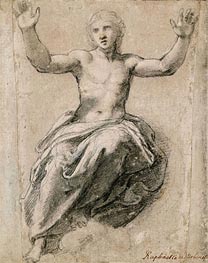
Giclée Paper Art Print
$51.70
$51.70
SKU: 11333-RSA
Raffaello Sanzio Raphael
Original Size:unknown
Private Collection
Raffaello Sanzio Raphael
Original Size:unknown
Private Collection
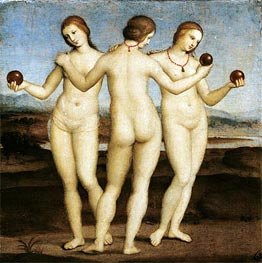
Giclée Canvas Print
$54.17
$54.17
SKU: 8483-RSA
Raffaello Sanzio Raphael
Original Size:17.8 x 17.6 cm
Musee Conde, Chantilly, France
Raffaello Sanzio Raphael
Original Size:17.8 x 17.6 cm
Musee Conde, Chantilly, France
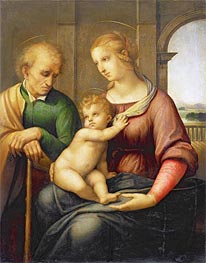
Giclée Canvas Print
$55.09
$55.09
SKU: 11328-RSA
Raffaello Sanzio Raphael
Original Size:72.5 x 56.5 cm
The State Hermitage Museum, St. Petersburg, Russia
Raffaello Sanzio Raphael
Original Size:72.5 x 56.5 cm
The State Hermitage Museum, St. Petersburg, Russia
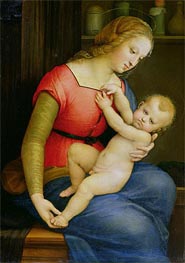
Giclée Canvas Print
$54.17
$54.17
SKU: 11316-RSA
Raffaello Sanzio Raphael
Original Size:31.7 x 23.3 cm
Musee Conde, Chantilly, France
Raffaello Sanzio Raphael
Original Size:31.7 x 23.3 cm
Musee Conde, Chantilly, France
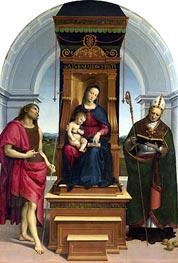
Giclée Canvas Print
$92.49
$92.49
SKU: 11282-RSA
Raffaello Sanzio Raphael
Original Size:216.8 x 147.6 cm
National Gallery, London, UK
Raffaello Sanzio Raphael
Original Size:216.8 x 147.6 cm
National Gallery, London, UK
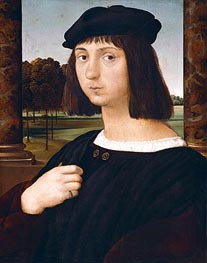
Giclée Canvas Print
$54.17
$54.17
SKU: 11304-RSA
Raffaello Sanzio Raphael
Original Size:unknown
Alte Pinakothek, Munich, Germany
Raffaello Sanzio Raphael
Original Size:unknown
Alte Pinakothek, Munich, Germany
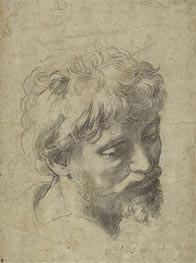
Giclée Paper Art Print
$51.70
$51.70
SKU: 11309-RSA
Raffaello Sanzio Raphael
Original Size:36.3 x 34.6 cm
Private Collection
Raffaello Sanzio Raphael
Original Size:36.3 x 34.6 cm
Private Collection
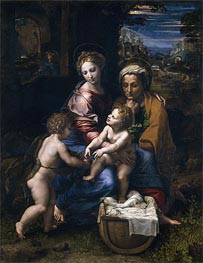
Giclée Canvas Print
$79.14
$79.14
SKU: 11323-RSA
Raffaello Sanzio Raphael
Original Size:147.4 x 116 cm
Prado Museum, Madrid, Spain
Raffaello Sanzio Raphael
Original Size:147.4 x 116 cm
Prado Museum, Madrid, Spain
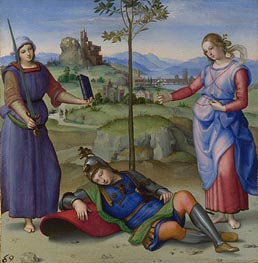
Giclée Canvas Print
$54.17
$54.17
SKU: 11283-RSA
Raffaello Sanzio Raphael
Original Size:17.1 x 17.3 cm
National Gallery, London, UK
Raffaello Sanzio Raphael
Original Size:17.1 x 17.3 cm
National Gallery, London, UK
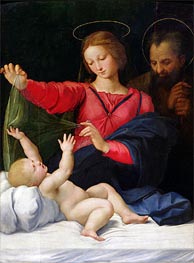
Giclée Canvas Print
$54.17
$54.17
SKU: 11312-RSA
Raffaello Sanzio Raphael
Original Size:120 x 90 cm
Musee Conde, Chantilly, France
Raffaello Sanzio Raphael
Original Size:120 x 90 cm
Musee Conde, Chantilly, France